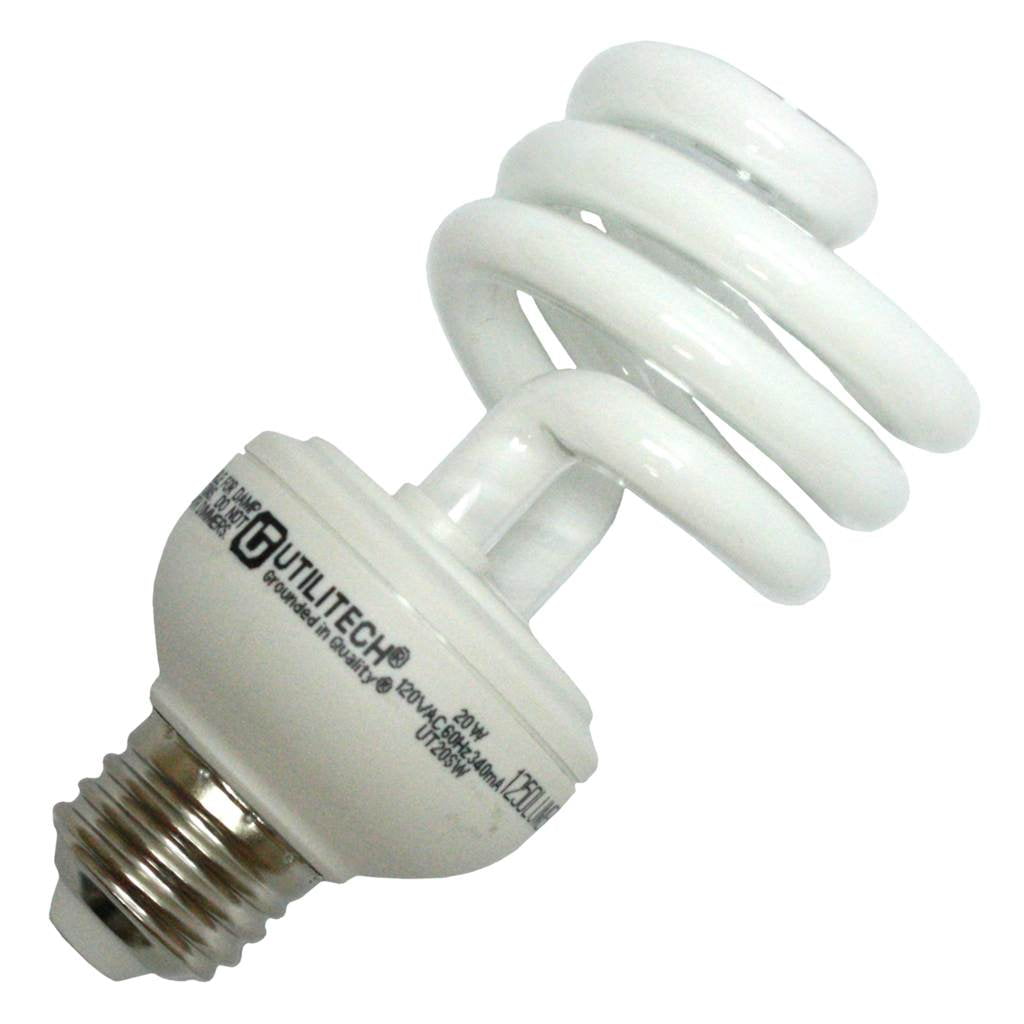

This required the development of new, high-efficacy phosphors that could withstand more power per unit area than the phosphors used in older, larger fluorescent tubes. Volume was an issue in CFL development, since the fluorescent lamps had to fit in the same volume as comparable incandescent lamps.

In 1985, Osram started selling its model Dulux EL, which was the first CFL to include an electronic ballast. It was based on the SL1000 prototype from 1976. This was the first successful screw-in replacement for an incandescent lamp, using new rare earth aluminum lattice phosphors to solve the problem of lumen depreciation that would normally occur quickly in such a thin tube however, it wasn't widely adopted, because of its large size, weight (over half a kilogram), pronounced 50 Hz flicker and 3-minute warm up time. The lamp used a folded T4 tube, stable tri-color phosphors, and a mercury amalgam. In 1980, Philips introduced its model SL*18, which was a screw-in or bayonet mount lamp with integral magnetic ballast. The design was eventually copied by others. Although the design met its goals, it would have cost GE about $25 million to build new factories to produce the lamps, and thus the invention was shelved. Hammer, an engineer with General Electric, in response to the 1973 oil crisis. The spiral CFL was invented in 1976 by Edward E. The first fluorescent light bulb and fixture were displayed to the general public at the 1939 New York World's Fair. Circular and U-shaped lamps were devised to reduce the length of fluorescent light fixtures. George Inman later teamed with General Electric to create a practical fluorescent lamp, sold in 1938 and patented in 1941. Įdmund Germer, Friedrich Meyer, and Hans Spanner patented a high-pressure vapor lamp in 1927. The Cooper Hewitt lamps were used for photographic studios and industries.

The parent to the modern fluorescent lamp was invented in the late 1890s by Peter Cooper Hewitt. General Electric has since stopped production of domestic CFL lamps in the United States in favour of LEDs. White LED lamps compete with CFLs for high-efficiency lighting. Improved phosphor formulations have improved the perceived color of the light emitted by CFLs, such that some sources rate the best "soft white" CFLs as subjectively similar in color to standard incandescent lamps. The principle of operation remains the same as in other fluorescent lighting: electrons that are bound to mercury atoms are excited to states where they will radiate ultraviolet light as they return to a lower energy level this emitted ultraviolet light is converted into visible light as it strikes the fluorescent coating, and into heat when absorbed by other materials such as glass.ĬFLs radiate a spectral power distribution that is different from that of incandescent lamps. These countries have established special collection systems for CFLs and other hazardous waste. In many countries, governments have banned the disposal of CFLs together with regular garbage. Like all fluorescent lamps, CFLs contain toxic mercury, which complicates their disposal. A CFL has a higher purchase price than an incandescent lamp, but can save over five times its purchase price in electricity costs over the lamp's lifetime. The lamps use a tube that is curved or folded to fit into the space of an incandescent bulb, and a compact electronic ballast in the base of the lamp.Ĭompared to general-service incandescent lamps giving the same amount of visible light, CFLs use one-fifth to one-third the electric power, and last eight to fifteen times longer. Comparison of CFLs with power ratings of 105 W, 36 W, and 11 WĪ compact fluorescent lamp ( CFL), also called compact fluorescent light, energy-saving light and compact fluorescent tube, is a fluorescent lamp designed to replace an incandescent light bulb some types fit into light fixtures designed for incandescent bulbs.


 0 kommentar(er)
0 kommentar(er)
